Hinduism
Are Indian Culture And Traditions Outdated?
Published
5 years agoon
By
Vedic Tribe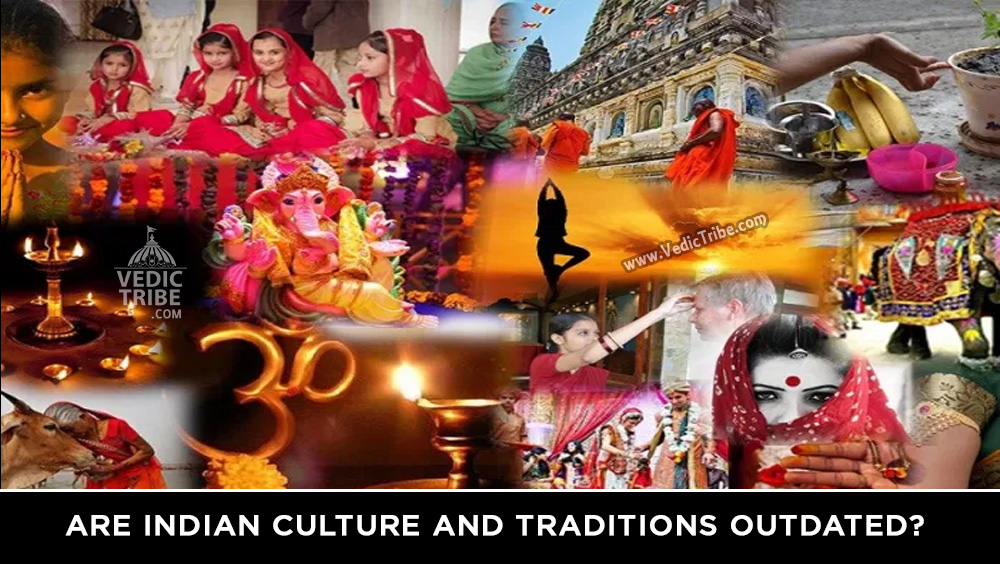
~ By M Pramod Kumar
Before I answer the question of what Indian youth need to know about Indian culture, perhaps it is more pertinent to ask ‘what do Indian youth know about Indian culture today?’ The typical response to this question would be ‘very little’ or ‘nothing.’
An undergraduate student at a school where I offer course on Indian Culture, shared this new finding about Swami Vivekananda: ‘Swami Vivekananda spoke in Tamil at the World Parliament of Religions held in South Africa!’ (sic)
Perhaps, I might across as a bit cynical, but having taught Indian Culture to undergraduate students for ten years now, I have learnt to be not just optimistic but more realistic in my assessment of where the younger generation stands today vis-a-vis Indian Culture.
The current situation or problem is simply born out of choice. There are many lifestyle choices available to Indian youth today. A hundred years ago, Indians did not have to make cultural and lifestyle choices like we do today.
Added to this problem of choice, is the handicap of ignorance. Today’s youth are not making a well-informed choice. It is not that they have examined the pros and cons of the lifestyles they choose or reject, it is simply a herd mentality which we all grow up with. We follow blindly whatever our peers do.
The young Indian is obsessed with the latest trends of globalization, to him what is new is cool and fashionable and all that is old is not even worth trying. Whether it is the latest fashion in clothing, be it a low rise jeans or a trendy jacket, or a major lifestyle choice such as a ‘live-in’ relationship, the young Indian says newest is the best.
Therefore, it is important that we create a system within the family, in the schools and colleges and in our local societies, which can impart knowledge of the foundations of Indian culture to the youth and engage them in a dialogue to address their doubts, so that they can make a wise choice based on a clear understanding of the stakes involved.
Let us examine some ‘frequently asked questions’ about Indian culture with the hope that the resolution provided to these FAQs will help the readers to engage the younger generation in a fruitful dialogue.
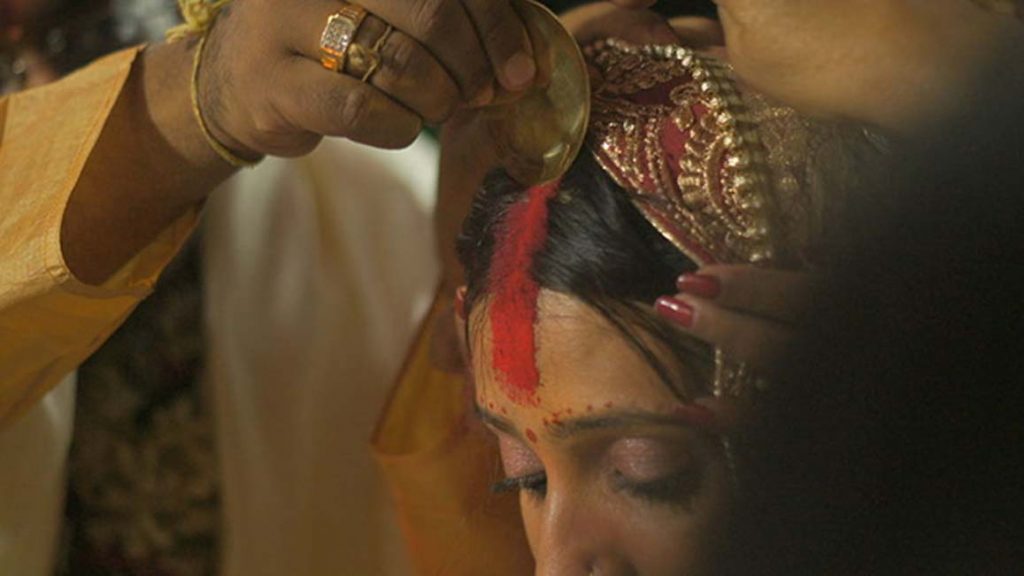
Is Indian Culture outmoded?
All that is old or ancient is not necessarily outdated and all that is new may not be good, even if it is fashionable. In this simple advice, lies the key to understanding young India’s predicament.
The young Indian wears a peculiar brand of tinted glasses on his eyes. When he looks to the West, he sees only milk and honey. ‘Look at how disciplined and civic conscious they are, look at their clean cities and orderly queues,’ he says. When he looks at India with his tinted glasses, he sees only dirt and squalor here. ‘Our politicians and bureaucrats are corrupt, the situation is hopeless. India is doomed unless we change and become like the West.’
If the West is truly so progressive and faultless, why is there such seething discontent and turmoil within? This discontent found expression in the ‘Occupy’ movement recently which is seeking answers to the economic inequality and exploitation created by a world controlled by large corporations which disproportionately benefit a minority. Just a hundred years of this western economic and technological advance has the brought much of the earth’s natural resources to the brink of an irreversible collapse.
And is there no corruption or social evil then in Europe or USA today? If so, why is that the leading intellectuals of the West are predicting their own eventual implosion owing to social degeneration:
“Taking recent rioting in Greece as my starting point… I argue that Western nations are in terminal decline unless they can rediscover the true meaning and value of marriage and of the blessing of children as a gift to married couples and to society in general.”i
Let us listen to the sane voice of Swami Vivekananda who diagnosed this disease of the young Indian long ago and warned us against it:
“On one side, new India is saying, “If we only adopt Western ideas, Western language, Western food, Western dress, and Western manners, we shall be as strong and powerful as the Western nations”; on the other, old India is saying, “Fools! By imitation, other’s ideas never become one’s own; nothing, unless earned, is your own. Does the ass in the lion’s skin become the lion?” On one side, new India is saving, “What the Western nations do is surely good, otherwise how did they become so great?” On the other side, old India is saying, “The flash of lightning is intensely bright, but only for a moment; look out, boys, it is dazzling your eyes. Beware! ” (CW, IV:477)
This is precisely our condition today and nobody could have put it more poignantly than the patriot monk of India who had great faith in the foundational values of Indian civilization.
Young India must understand that Swami Vivekananda was not being emotional or sentimental in their defense of India. His intellect pierced through the superficialities of external appearances and he had the discrimination to see differentiate between the ephemeral and eternal. Let us learn from the story of the rise and downfall of many great civilizations and respect the fact that if India has not yet succumbed to a similar fate, then there must be some strength in our culture which has withstood the agni pariksha of Time, the all-destroyer.
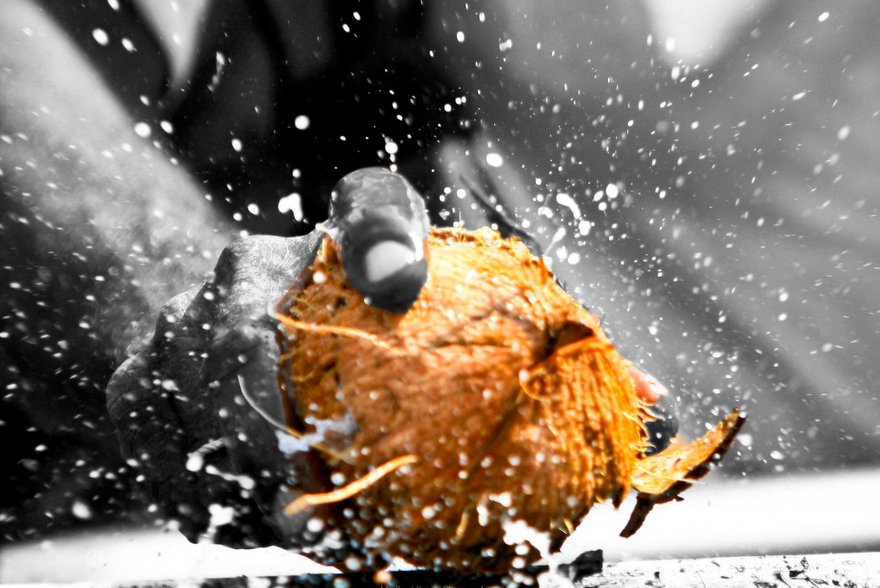
Can Indian Culture guarantee success in the modern world?
Success for the young Indians today is purely a materialistic term. An individual’s success is measured by his bank balance. Only those things are valuable to us which have a good market value. Young India therefore wants a ‘culture’ which can guarantee materialistic prosperity. Swami Vivekananda would look down upon us and perhaps say, ‘Fine! So be it. Have your fill of materialism before you understand success in a more subtle sense.”
Yes my dear young friends, India was successful for more than a millennium in the materialistic sense. According to the economic historian Angus Maddison, India had the world’s largest economy during the years 1 AD and 1000 AD. ii And India continued to be a major economic power till the British systematically reduced it to one of the poorest nations on earth.
Left to ourselves, our cultural traits have aided us in creating wealth and prosperity for society. Paul Johnson, a columnist for the Forbes magazines comments on these remarkable cultural traits which continue to contribute to the success of the Indian Diaspora all over the world:
“When left to themselves, Indians always prosper as a community. Take the case of Uganda’s Indian population, which was expelled by the horrific dictator Idi Amin and received into the tolerant society of Britain. There are now more millionaires in this group than in any other recent immigrant community in Britain. They are a striking example of how far hard work, strong family bonds and a devotion to education can carry a people who have been stripped of all their worldly assets.” iii
Swami Vivekananda had more faith in human beings than in all the material wealth of the world:
“First of all, try to understand this: Does man make laws, or do laws make man? Does man make money, or does money make man? Does man make name and fame, or name and fame make man? Be a man first, my friend, and you will see how all those things and the rest will follow of themselves after you.” (CW, V:491)
Management gurus who are predicting the implosion of Western economies are turning towards the wisdom of the Bhagavad Gita and the Artha Shastra today. Success is an unfoldment of the inner strength of individual. It is such cultured individuals to make a society successful and not the other way round.
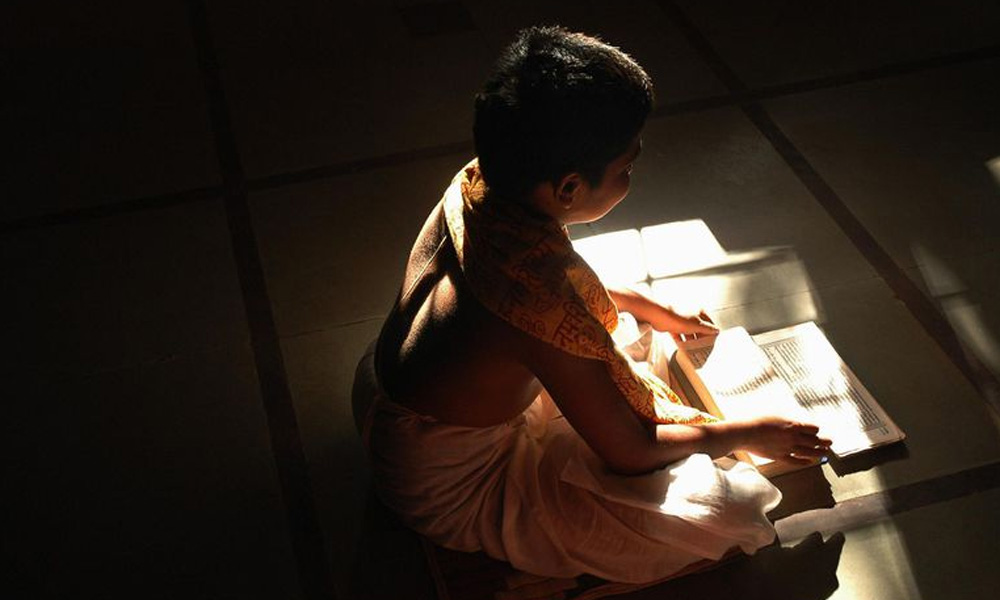
What about India’s social evils?
Young India wants to clean up all the social ills of Indian society in a jiffy. Generation X and their ancestors in social reform, in their hurry to clean up, have often ended up creating more problems than solving any.
Swamiji was at his humorous best when he sarcastically commented on pseudo-reformers who considered the West as a benchmark in resolving the problems of Indian women. When one such reformer asked him about his views on widow remarriage, Swamiji retorted,
“I am asked again and again, what I think of the widow problem and what I think of the woman question. Let me answer once for all — am I a widow that you ask me that nonsense? Am I a woman that you ask me that question again and again? Who are you to solve women’s problems? Are you the Lord God that you should rule over every widow and every woman? Hands off! They will solve their own problems. O tyrants, attempting to think that you can do anything for any one! Hands off! The Divine will look after all. Who are you to assume that you know everything?” (CW, III: 207)
Similarly, during his tour of the US, an American lady made a reference to the British propaganda surrounding the myth of Indian mothers throwing unwanted babies into the Ganga. Swamiji jovially replied, “Yes Madam! My mother also threw me into the Ganga. But I was so fat that no crocodile could swallow me, and here I am lecturing to you, having crossed the Indian Ocean.” (CW, IV:161)
Swamiji repeatedly cautioned that India should not accept ideas, reforms or social practices coming from the West without critical examination and validation in the light of the foundational values of Indian civilization. He never advocated throwing the baby out with the bath water.
This does not mean that we are asked to go back to the traditional customs of the past. Customs and rituals are but expressions of the culture of Bharatavarsha. Sometimes, the expression may become distorted over a period of time owing to incursions and deviations. But as long as the soul is untouched, the culture lives on and readapts itself to the changing needs of the people. The Bhagavad Gita teaches us that when the body becomes old and diseased, it is discarded like a piece of old, worn out cloth and the soul finds a new body. So it is with customs and social practices.
If some of our customs and practices have become outmoded, we have the freedom to do away with them as a gardener would chop off deadwood to prevent the rot from spreading in order to save the tree. But have gained the eligibility to sit in judgement over Indian society or to reform its complex mechanisms? Only a person who loves India deeply can gain the authority to change it.
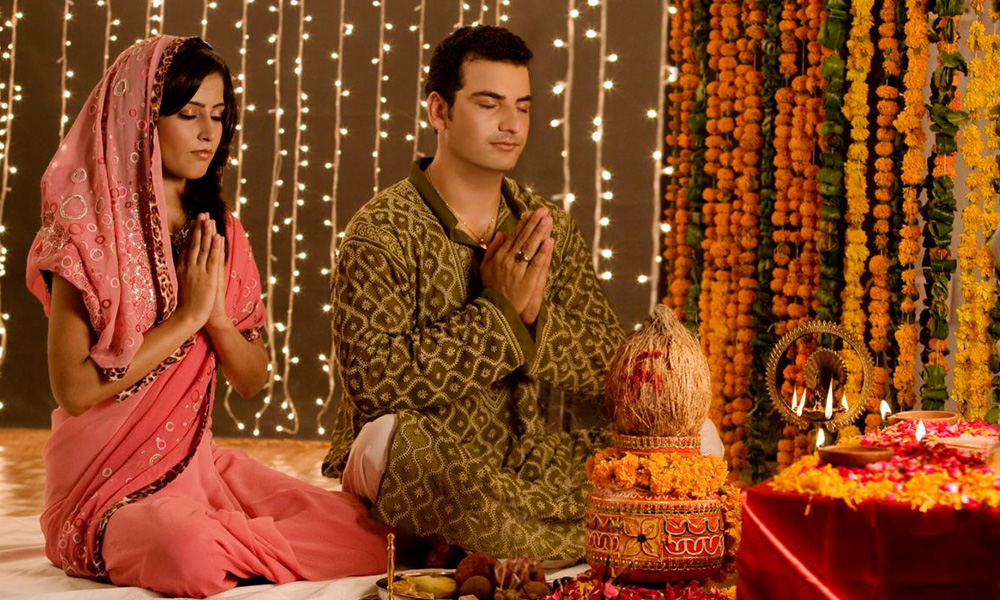
The Core of Indian Culture
So, what is this soul of India which has survived in spite of many ups and downs that we have witnessed over millennia? The core of Indian Culture is the Vedic vision of life. As long as this spiritual worldview is alive and handed down in tact from generation to generation, India will not only survive but thrive in the ages to come with many new expressions of creativity. Swami Vivekananda never tired of reminding us about the core of Indian Culture in his spirited exhortations:
“…as long as this principal function of our life is not disturbed, nothing can destroy our nation. But mark you, if you give up that spirituality, leaving it aside to go after the materializing civilisation of the West, the result will be that in three generations you will be an extinct race; because the backbone of the nation will be broken, the foundation upon which the national edifice has been built will be undermined, and the result will be annihilation all round.”
Will Young India heed the advice of savants like Vivekananda or will it turn away from its heritage and become an imitation of foreign cultures? Swamiji had great faith in the younger generation and hence it does not behove us to be cynical. But, having said that, it is important to reiterate what was said in the beginning of this article – it is imperative and urgent that we create systems to disseminate knowledge of Indian Culture to the youth.
There is perhaps no better way of spreading awareness of Indian Culture than by making Vivekananda literature accessible to the youth. As we participate in the 150th Jayanti celebrations of Swami Vivekananda, let us all take a resolve to create at least one Vivekananda Study Circle in our local societies to herald a silent transformation of the youth of India. iv
(This article is an excerpt from the book ‘Model for Modern Youth’ released on 8th January 2014 at Chennai as part of the 150th Jayanti Celebrations of Swami Vivekananda organized by NSS chapter of Anna University and Yuva Shakthi, a youth NGO. The author, M. Pramod Kumar is an assistant professor in the department of cultural education at Amrita University, Coimbatore.)
You may like
-


Seven Vows and Steps (pheras) of Hindu Wedding explained
-


Sari or Saree is symbol of Indian feminism and culture
-


Atithi Devo Bhava meaning in Hinduism and India
-


Sanskrit Is More Than Just A Method To Communicate
-


Navaratri: The Nine Divine Nights of Maa Durga!
-


Significance of Bilva Leaf – Why is it dear to Lord shiva?
Hinduism
Significance of Bilva Leaf – Why is it dear to Lord shiva?
Published
5 years agoon
March 12, 2021By
Vedic Tribe
– Arun Gopinath
Hindus believe that the knowledge of medicinal plants is older than history itself, that it was gifted hundreds of thousands of years ago to the Vedic by Lord Brahma, the divine creator.
Thus when the Rishis of the Ayurveda sought to heal human suffering, they were able to draw on knowledge that had already been evolving for millennia in the forests of India. One tree about which they had a very deep knowledge was the Bilva tree. The science of Ayurveda values the Bilva highly for the medicinal properties contained in its root, fruit and leaves. According to Swami Sivananda, it is a healing tree which cures all diseases caused by vata (wind) and gives strength to the body.
More commonly known as the Bel Tree in India as well as other warm countries, this is a sacred tree having sacrificial importance and the first thing we can notice about the leaves is that they are generally trifoliate. This trifoliate leaf is symbolic of Trikaal or the Hindu Trinity of Devas known as Brahma Vishnu and Mahesh. The other names of this tree are Wood apple and its botanical name is Aegle marmilos.
The Bilva leaf or Patra as it is known, represents the Trinetra or three eyes of Lord Shiva, the main aspects like Trishakti (volition, action and knowledge), the three Shiva lingams and the three syllables of AUM or Omkar and are most favorite of Lord Shiva.
There are also five formed Bilva leaves known as PanchaDal patra found on some Bilva trees and these too are held as sacred for the worship of Lord Shiva. Bilva tree grows to a height of 8 meters with thorns. The leaves are alternate, ovate, trifoliate and aromatic. The tender leaves and shoots are consumed as salad greens. The flowers bloom in the month of May and will have a sweet fragrance.
It appears from all the Hindu texts and scriptures that the Bilva tree itself has been held very sacred and auspicious and is considered very holy since time immemorial thats its significance is mentioned in Mahapuranas in various forms of mantras. The Shiva Purana mentions a particular narration of how the usage of Bilva due to its scientific as well as medicinal properties is of great adavantage to Mankind.

The 22nd Chapter of maha ShivaPurana narrates ” The trifoliate Bilva Patra is so sacred to Lord Shiva & is therefore a symbol of the Lord. Adored by all the Gods, its importance is difficult for anyone to comprehend. The sacred tree can only be known to a limited extent. Sacred sites of this Earth can only find their place at the root of this auspicious tree. Those who meditate upon Lord Mahadeva in His form of linga at the root of Bilva obtain Moksha & become purified souls by attaining Shiva. Such are the marvels of this sacred Bilva.”
The famous Shri Bilvashtakam (v. 6–7) Mentions :
Lakshmyaascha stana utpannam Mahaadeva sadaa priyam,
Bilva vriksham prayachchhaami eka bilvam Shivaarpanam.
Darshanam bilva vrikshasya sparshanam paapanaashanam,
Aghorapaapasamhaaram eka bilvam shivarpanam.
Translation :
Born from the heart of Goddess Lakshmi, the Bilva tree is ever dear to Mahadeva. So I ask this tree to offer one Bilva leaf to Lord Shiva. Even if (one) has darshan ( view) of the Bilva tree, and touches it, surely frees one from sin. The most terrible karma is destroyed when a Bilva leaf is offered to Lord Shiva.
It is also believed that Lakshmi, the Goddess of Wealth, also lives in the bel tree. Those who perform the puja of Shiva and Parvati devoutly, using the leaves, will be endowed with spiritual powers.
Scientific Advantages
According to Hindu scriptures, the Bilva is Triguna which is connected to the three Gunas or components of natural characteristics of the tree. In Hindu philosophy, the three Gunas are Sattva, Rajas & Tamas with Sattva being the pure most while Tamas normally is to do with darkness & ignorance.
The Sattvic component is believed to be more centered within the bilva patra and therefore the high capacity to absorb and emit Sattvic frequencies. This has various effects on the environment as well as on anyone merelt touching the leaf. One of them is the reduction of Rajasic-Tamasic atoms present in the atmosphere & more importantly within the human body.
A Sattvic leaf like bilva patra when brought in proximity of a person suffering from negative energies such as distress and anxiety is believed to medically reduce these energies within the human body. People with negative outlook towards life and their environment normally do not realize they have negative energies building up within their body and are at a risk of subconsciously harpering destructive thoughts also.
Whenever such people come into contact with a Sattvic atmosphere, what they fail to realize is their negative energies try to fight the positivity of a Sattva predominant environment. This struggle can build up at various levels and can vary from the human mind thinking negatively and can result sudden bursts of anger to destruction of things around them.
Medicinal uses
The roots, skin, fruits and the leaves of the Bilva tree are used for medicinal purpose. Bilva has astringent, edema lessening, anti-diarrhea, laxative and appetizer properties hence, can be used to cure both internal and external diseases.
The sacred tree has many medicinal usages and is advantageous in curing many human ailments such as :
- Bleeding gums.
- Bel fruit clears diarrhea, dysentry, phlegm, high blood pressure, morning sickness in pregnancy, stress.
- Asthma can be controlled when a mixture of dry bel leaf powder & honey is consumed daily
- Jaundice can be cured by consuming the extracted juice of the bilva leaves
- Anemia can be cured by drinking the powder of the bel fruit mixed with milk
- Bel fruit keeps the skin rejuvenated when pasted into a face pack; also cures joint aches
Hinduism
Concept of Time and Creation (‘Brahma Srishti’) in Padma Purana
Published
5 years agoon
March 12, 2021By
Vedic Tribe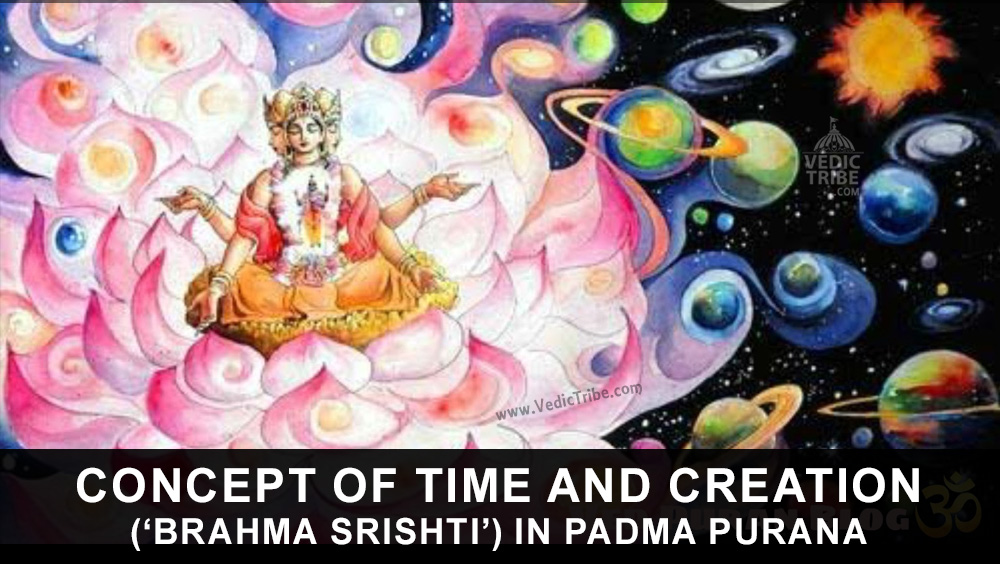
Pulastya Maha Muni affirmed to Bhishma that Brahma was Narayana Himself and that in reality he was Eternal. But in a formal sense it was stated that Brahma was ‘created’ and in that normally recognised manner Brahma had hundred years of age; apparently, the concept of Time would have to have a basis and that was why Brahma’s age was determined notionally as of hundred Brahma Years; in other words, ‘Para’or the first half was over and his present age has entered the ‘Paraartha’, the second half (viz. Fifty first year).This was how, the concept of Time emerged.
Every fifteen ‘Nimeshas’ constitute one ‘Kaashtha’; thirty Kashthas one one ‘Kala’; thirty Kalas make one ‘Muhurtha’; thirty Muhurtas make one day/night, thirty day/nights make on ‘Maasa’; (half Maasa makes one ‘Paksha’), six Maasas make one ‘Ayana’ and two Ayanas-Dakshinayana and Uttarayana- make one ‘Year’. Dakshinayana is a night for Devas and Uttarayana their day. One hundred human years make one day-night of Devas.
Twelve thousand Deva Years make four Yugas viz, Satya Yuga, Treta Yuja, Dwapara Yuga and Kali Yuga and these four Yugas make one Maha Yuga which is Brahma’s one day! Satya Yuga comprises 4800 DevaYears including ‘Sandhya mana’ of 400 years and ‘Sandhyamsha maana of additional 400 years; Treta Yuga comprises 3600 Deva Years including 600 years of ‘Sandhya/ Sandhyamsha mana’each; Dwapara Yuga of 2400 years including 200 years of ‘Sandhya/ Sandhyamsha mana’each and Kali Yuga of 1000 years including 100 years each of Sandhya / Sandhyamsha manas.Deva Years are 360 times more than human years. For instance, the duration of Kali Yuga in human year terms is 432,000 years; Dwapara’s is 864000; Treta Yuga’s is12, 96,000 and of Satya Yuga is 17, 28,000 years; all the Yugas totalling 432, 00, 00,000 (432 million) make one Chaturyuga and that constitutes one Brahma Day!

In one day of Brahma there are fourteen Manvantaras and each Manvantara has 8, 51,000 of Deva Years. There are two kalpas on one day-night of Brahma.At the end of the previous Kalpa, Brahma felt fresh from the previous night and found that Prithvi was submerged in water while Bhagavan Varaha Deva entered into water and Prithvi prayed to him; in response, Varahadeva emanated a ‘Ghur Ghur’ sound which was like the reverberation of Sama Veda, lifted up Prithvi from Rasala loka by the might of his horns, Devas rained fragrant flowers from the sky, Rishis went into rapturous tributes to Vishnu’s incarnated Varaha Rupa; and Brahma implored the latter to allow him recommence Srishti with his blessings as also to preserve and administer the Creation that he would so generate even as the Lord gracefully replied to say: ‘Tathastu!’ (So be it!).
Brahma’s first Srishti being Maha Tatva, the creation of Tanmatras was known as Bhuta Sarga or the Second Srishti; Vaikarika or Satvika Ahankara was the third Srishti of Indriyas or Aindriya Sarga; the Fourth Srishti is the Mukyha Sarga related to Mountains, Forests and other Sthaavara Srishti; the fifth Srishti relates to Pashu-Pakshi (Animals and Birds); the seventh Srishti was called Deva sarga or Urthva faced and was of Devas; and Seventh Srishti was of Manava Sarga; the Eighth was of Anugraha Sarga which could be of Satvika or Tamasic nature and finally the Ninth Srishti called the Kaumara Sarga which could be of Prakrita or Vaikrita Marg.
Depending on the carry forward of one’s own balance of ‘Papa-Punya’of the previous time-frame preceding the Pralaya, placement of lives was commenced by Brahma in the New Age. Arising out of his ‘Manasika Samkalpa’ (Mind born Proposal), Brahma created various species including Devas, Asuras, Pitaras and human beings. From his thighs, the evil Asuras emerged and as per his free will various birds were created.
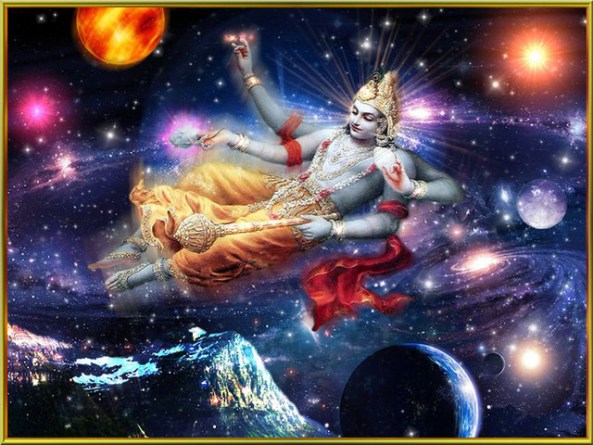
From his stomach surfaced cows, his shoulders the wolves; his face created horses, elephants, asses, nilgais, deer, camels, etc.each species multiplying several others. Brahma’s body hairs created fruits, roots and foodgrains. From his right extreme face, Brahma created, Gayatri Chhandah, Rig Veda, Tivritstoma, Rathantara, Agnihoshtha yagna; from South-faced he created Yajur Veda, Tristhub Chandas, Panchadasha stoma, Brihatsaama, etc; Sama Veda, Jagati Chhanda, Saptadashastoma, ‘Vairupa’ etc; from the Western face; Brahma created Ekavimshatstoma, Atharva Veda, Aptoryama, Anushthup chhanda, and Vairaja from the Uttaravarti Mukha. Miscellaneous ‘Pranis’ were created from any of the limbs of Brahma. To sum up thus at the beginning of the Kalpa, Prajapati Brahma created Devas, Asuras, Pitaras and human beings as also of Yakshas, Pishachas, Gandharvas, Apsaras, Siddhas, Kinnaras, Raakshasaas, Lions, Birds, Animals and Reptiles.
Focussing attention on human beings now, Bhishma asked the highlights of Varnashrama Vidhi and Pulastya Muni explained that Brahma created Brahmanas from the face, Kshatriyas from ‘Vakshasthali’ (chest), Vaishyas from thighs; and Shudras from the feet.These four Varnas are the important constituents of ‘Yagnas’; Devas are satisfied wirh their respective portions of ‘Havis’ (oblations) to Agni and being pleased with the Yagnas, Devas bestow good rains and good crops which leads to material prosperity.
The hearts and hands of every body tend to be clean and social customs and virtuous living would go hand in hand. Prajapati decided the duties of the Four Varnas, depending on the professions that human beings tended to follow like Brahmanas performing Yagnas, Vratas, Temple Tasks, and enabling various religious deeds of Virtue in favour of the members of three other Varnas etc.; Kshatriyas discharging the responsibilities of Kingship, Administration, Security against external enemies, collection of taxes and maintenance of Internal Law and Order; Vaishyas performing business, farming, trading and all matters involving finance, provision of materials to others by allowing reasonable profits for the services given etc. and Shudras supporting the members of the Three Varnas in the discharge of duties being undertaken by them.
Brahma materialised the above various kinds of Creations by applying his mental faculties but was not quite satisfied as the next generations so created were not adequate to fill in the universe; therefore he created Sages like Bhrigu, Pulaha, Kratu, Angira, Marichi, Daksha, Atri and Vasishtha, in addition to the four ‘Manasa Putras’ viz. Sanaka, Sanandana, Sanatana and Sanat Kumaras. As not all these sons were interested in family lives, Brahma created Rudra from his forehead and decided that half of the body be a woman; thus Eleven Rudras got materialised along with as many Rudranis who had a variety of Rupas ranging from ‘Sowmya’ (composure), ‘Krura’(unkindness), ‘Shanta’ (peacefulness), ‘Shyama’ (darkness), ‘Gaura’ (wheatish) and such other colours.
Further on, Brahma created Swayambhu Manu and the latter’s wife Shatarupa; the Manu couple gave birth to sons Priyavrata and Uttanapada and daughters Prasuti (married to Daksha) and Akruti (married to Ruchi Prajapati). To Prasuti and Daksha were born twenty four daughters, thirteen of whom were Shraddha, Lakshmi, Dhruti, Pushti, Tushti, Megha, Kriya, Buddhi, Lajja, Vapu, Shanti, Sidhi, and Kirthi (all these thirteen were married to Dharma); eleven more daughters were Khyati, Sati, Sambhuti, Smriti, Preeti, Kshama, Sannati, Anasuya, Urja, Swaha and Swadha; they were wedded respectively to Bhrigu, Shiva, Marichi, Angira, Pusasthya, Kratu, Atri, Vasishtha, Agni and Pitras.
The sons of Daksha’s daughters were Kamak by Shraddha, Darpa to Lakshmi, Niyam to Dhriti, Santhosh to Tushti, Lobha to Pushti, Shruta to Megha; Danda, Vinay and Naya to Kriya, Bodha to Buddhi, Vinay to Lajja, Vyavasayak to Vapu, Kshema to Shanti, Sukha to Siddhi, and Yash to Kirti.These were all the sons of Dharma. Kaam and Nandi gave birth to Harsha, the grand son of Dharma. Bhrigu and Khyati gave birth to Devi Lakshmi who was Lord Narayana’s wife. Bhagavan Rudra accepted Sati as his wife (Daksha’s daughter) but Devi Sati sacrificed her life pursuant to Daksha’s Yagna to which Rudra was uninvited but Sati insisted in attending it; she felt highly insulted by her father Daksha who also offended Rudra Deva and Rudra eventually destroyed Daksha Yagna. — with Srilan Srisukumaran.
Hinduism
Karma Yoga – Yog Through Selfless Actions
Published
5 years agoon
February 23, 2021By
Vedic Tribe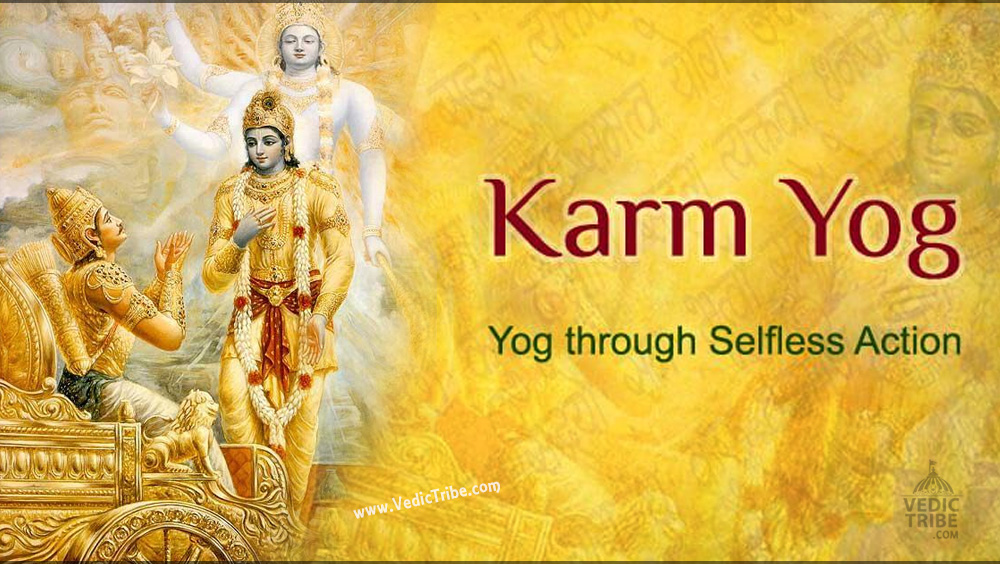
Karma Yoga is Meditation in Action:
“Karma” means action and “yoga” means loving unity of our mind with God. To perform karma and also practice yoga means to remain engaged in activity in the world while remaining in a state of devotional unity with God. This is true spiritual action.
Your bhakti yoga meditation practice will combine all these aspects and it will include:
- Daily sitting meditation
- Daily dynamic meditation woven seamlessly into the fabric of your life’s activities
Before we look at guidelines for these, let’s explore how process is described in the Hindu scriptures.
Karma Yoga of the Bhagavad Gita:
One of the most important scriptures of Hinduism, the Bhagavad Gita, was revealed under unusual circumstances: moments before a war and in the middle of a battlefield. It is comprised of a 700-verse dialogue between Lord Krishna, supreme God, and Arjuna, his loving disciple.
The all-in-one solution of the Bhagavad Gita for eliminating karma is Lord Krishna’s advice to practice akarma or actions that have no karmic consequence.
If we could perfect akarma in daily activity, the consequences of our actions would automatically be neutralized — even though we are engaged in action.
This means that from the point of view of karmic debt, no consequences would be added to our “account”. The only key to this is we must maintain an unbroken and continuous devotion to God.

Karma yoga philosophy in the Bhagavad Gita is summed up in one statement of Lord Krishna:
“Remember Me and fight.”
But is it really possible to simultaneously do devotional remembrance and be engaged in activity? Can the mind function in two places at the same time? This is definitely impossible, but for karma yoga to be done properly, both have to happen simultaneously.
For example, if you are at work and absorbed in a project, and remember God occasionally, how are both these actions accounted for as karmas?
The time you spent in devotional remembrance will be considered devotional action, and the time you spent engrossed in working will be considered normal action. This is not karma yoga.
Plus, a common misconception describes karma yoga as “performing action without being attached to the results”. Although this sounds noble, is it psychologically possible for any human being to do this?
The fact is because we are constantly trying to find authentic happiness, we will always anticipate the outcome of our actions in advance of doing them.
The practical form of the Gita’s karma yoga…
In the Gita, Krishna was both supreme God and Arjuna’s spiritual guide. Krishna advised Arjuna to surrender to Him and to simply follow His instructions. By transferring his motivation for action to a divine personality, Arjuna would not be responsible for the outcome of the actions he was instructed to perform.
For example, a police officer is issued a revolver, which he is instructed to use in the line of duty by his superiors. It could happen that he kills someone in the pursuit of law and order. In the eyes of the justice system, this will not be considered a crime. He did not use his own mental motivation to decide to kill someone — he simply followed the guidelines given to him by his superiors.
In Arjuna’s situation, in spite of engaging in war, all his actions were counted as devotion, because his heart, mind and body were fully dedicated to the will of Krishna.
This again highlights one of the most important points of karma yoga: The mind is the performer of action, not the physical body.
It is our personal motive that has to be carefully redirected for karmic consequences to change or be neutralized.

A Closer Look at the Spiritual Theory
If a practitioner is surrendered to a true divine Guru, and performs actions entrusted to him by his Guru, that activity is considered not only karma yoga, but also bhakti or spiritual action. It will be free of a karmic consequence. That practitioner is not directly attached to the results of that activity because his motive is to follow the instructions of his Guru.
Arjuna accepted Lord Krishn as his Guru at the very beginning of the Gita when he declared he was Lord Krishna’s disciple. He preserved the understanding during the entire Mahabharata War that he was doing service for his Guru.
In this way, just by holding this intention, his devotion remained unbroken and his actions were considered karma yoga. Thus, service to a true Guru is called karma yoga or devotion.
Practically speaking, a Guru will give instructions on how a practitioner can keep his mind engrossed in a state of continuous devotional remembrance. Simply by following these instructions, a disciple is automatically practicing karma yoga.
Those devotional guidelines take the form of (1) karma sanyas and (2) karma yoga.
Karma Sanyas – Quiet Time for Meditation
And old method of dyeing fabric in India was to place a cloth in a dye bath and then allow it to dry in the sun.
After drying, the intensity of the color faded. Again the cloth was placed in a dye bath, again it was placed in the sun, and again the color faded, but the second time more of the color remained.
After entering the dye bath multiple times, the color eventually became intense and fixed.
Similarly, to establish devotion in our hearts and minds, it is important to have a structured daily practice of sitting meditation.
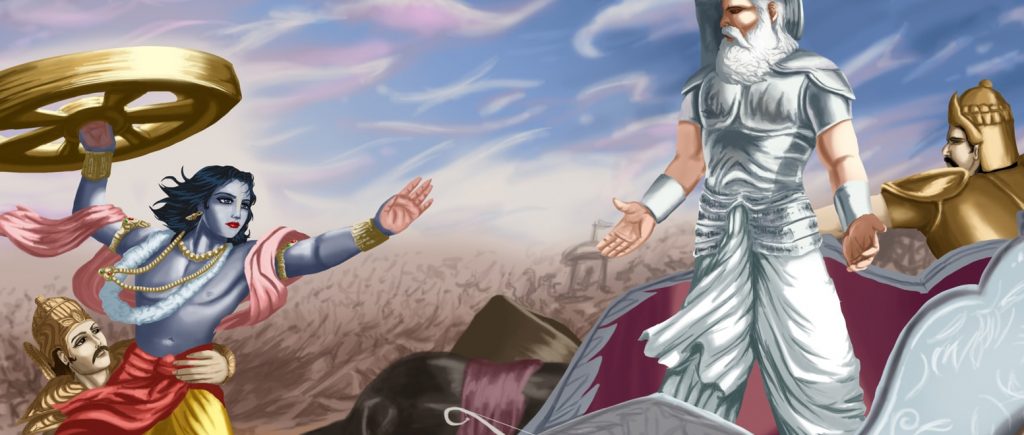
The main elements of a daily devotional practice include:
- Heart-centered prayer
- Kirtan or chanting meditation combined with active visualization
- Aarti-the offering of light – a brief ceremony that reaffirms the spirit of our devotional dedication
Karma Yoga – Dynamic Devotion
For the attainment of divine love, the Vedas state that there is only one rule and one prohibition that apply to bhakti yoga meditation. The rule is: “Always remember Radha Krishna.” The prohibition is, “Never forget Radha Krishna.”
This means that after our sitting meditation, our meditation should continue — while eating, sleeping, walking, working, talking, resting, and so on.
Wherever you are, all the time, whatever you are doing, remember your divine beloved and don’t forget Him! This simultaneous devotion and action is karma yoga. This state of devotional consciousness is cultivated over time with practice.
For example, in the old days street musicians with hand organs kept small monkeys. A monkey by nature is extremely active. How to make a monkey’s nature conform to sitting still, and that, too, in a confined space?

The musician’s technique was to first restrain the monkey with a 100-foot rope. If the monkey tried to go outside of this range, he was stopped. He thought, “Okay, I’ll jump around in a 100-foot area.”
When he was tied with a 50-foot rope he thought, “I went 100 feet yesterday, today I’m restricted to this much.” So he jumped around in a 50-foot area.
When the monkey was finally limited to only 1 foot of rope, he sat quietly, “Why should I drive myself crazy? I’ll just sit here.”
The human mind has this same monkey-like nature. It roams far and wide. Our goal is not to tame it’s active nature, but to train it to roam in a particular area. This is done by gently tying it with the devotional rope of love.
In sitting meditation we cultivate a feeling a devotional relationship with God. In active meditation we can continue this in three ways:
- Embed your intention — Every person has a mission that guides his life’s activities. For example, very few people like to work, but they do it because their mission is to support themselves or their family. While they are at work, although this motive is hidden deep in their mind, it still guides their decisions and actions.Similarly, when we firmly understand the purpose of our life is God-realization, this intention deeply embeds itself in the mind. If cultivated properly, this subconscious devotional intention remains in all our activities, even when we are sleeping.
- Feel divine presence — in sitting meditation we visualize and feel our relationship to God’s personal form. In activity, take hourly breaks for 30 seconds or a minute and with open eyes sense the presence of your worshipped form of God or Radha Krishna. Simply feel you are not alone. Imagine them near or far, sitting, standing or in any position, in any mood of love.
- Share your awareness — After visualizing God’s presence, either feel He is watching you or that you are showing Him what you are doing.
- Avoid wrong association — your associations and environment will affect your feeling of divine connection. Be mindful and avoid those situations that divert your devotional intention.
There is no restriction of time, place and activity for this remembrance. It can be done anywhere, at any time. You do not need to sit in a particular position or have closed eyes. This very simple practice will recall the blissful feelings of your seated meditation and help to stabilize your devotional experience.
Follow us on Facebook
Follow us on Twitter
Latest


Seven Vows and Steps (pheras) of Hindu Wedding explained
Views: 8,956 Indian marriages are well renowned around the world for all the rituals and events forming part of the...


Sari or Saree is symbol of Indian feminism and culture
Views: 7,263 One of the most sensual attires of a woman in India is undoubtedly the sari. It is a...


Atithi Devo Bhava meaning in Hinduism and India
Views: 6,983 Atithi Devo Bhava, an ancient line taken from the Hindu scriptures and was originally coined to depict a visiting person whose...


Sanskrit Is More Than Just A Method To Communicate
Views: 5,308 -By Ojaswita Krishnaa Chaturvedi anskrit is the language of ancient India, the earliest compilation of sound, syllables and...


Significance of Baisakhi / Vaisakhi
Views: 6,502 Baiskhi is also spelled ‘Vaisakhi’, and is a vibrant Festival considered to be an extremely important festival in...


Navaratri: The Nine Divine Nights of Maa Durga!
Views: 7,617 – Shri Gyan Rajhans Navratri or the nine holy days are auspicious days of the lunar calendar according...


History of Vastu Shastra
Views: 10,712 Vastu Shastra (or short just Vastu) is the Indian science of space and architecture and how we may...


Significance of Bilva Leaf – Why is it dear to Lord shiva?
Views: 10,409 – Arun Gopinath Hindus believe that the knowledge of medicinal plants is older than history itself, that it...


Concept of Time and Creation (‘Brahma Srishti’) in Padma Purana
Views: 10,650 Pulastya Maha Muni affirmed to Bhishma that Brahma was Narayana Himself and that in reality he was Eternal....


Karma Yoga – Yog Through Selfless Actions
Views: 9,587 Karma Yoga is Meditation in Action: “Karma” means action and “yoga” means loving unity of our mind with...

